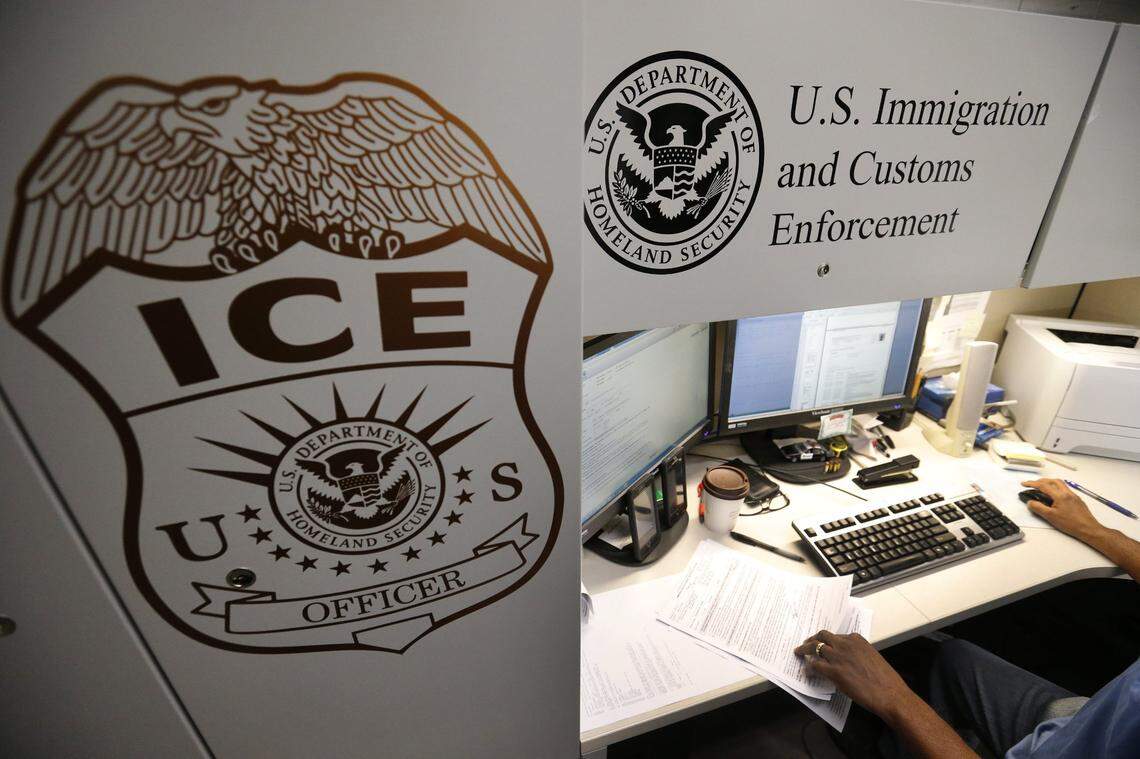In the Spotlight is a Fresno Bee series that digs into the high-profile local issues that readers care most about. Story idea? Email tips@fresnobee.com.
ICE arrests in California’s Central Valley have risen by 58% in the first seven months of the Trump administration compared to the same time period last year.
The Fresno Bee analyzed U.S. Immigration and Customs Enforcement data obtained via a Freedom of Information Act request filed by the Deportation Data Project, a UC Berkeley Law School initiative.
The data sheds light for the first time on how ICE operates in the Central Valley, such as where administrative arrests have taken place and which demographic groups have been most impacted.
La Abeja, a newsletter written for and by California Latinos
Sign up here to receive our weekly newsletter centered around Latino issues in California.
ICE arrested an estimated 1,156 individuals in Fresno, Kern, Kings, Madera, Merced and Tulare counties between January to the end of July.
During the same time period in 2024, ICE made 733 arrests in the six-county region.
While many of these cases are pending, at least 516 individuals have already been deported. Most of these arrests took place in the Fresno and Bakersfield areas, where ICE has sub-field offices.
Bill Ong Hing, founding director of the Immigration and Deportation Defense Clinic at University of San Francisco, warned that arrests will likely increase throughout the state after last month’s Supreme Court decision that allows immigration agents to conduct “roving patrols.” He said the court’s decision gives ICE the permission to “racially profile.”
“They’re trying every strategy,” he said.
An ICE spokesperson said the agency could not verify or comment on the data compiled by the Deportation Data Project.
“U.S. Immigration and Customs Enforcement is executing its mission of identifying and removing criminal aliens and others who have violated our nation’s immigration laws,” an ICE spokesperson said. “All aliens in violation of U.S. immigration law may be subject to arrest, detention and, if found removable by final order, removal from the United States, regardless of nationality.”
This tally is likely an undercount of total ICE apprehensions of Valley residents.
The data only reflects administrative arrests made by ICE Enforcement and Removal Operations, the division responsible for enforcing immigration law in the country’s interior. Also, not all arrest records in the dataset include details on where an individual was arrested. The San Francisco ICE field office, which oversees operations in the Central Valley, made 305 arrests under a “fugitive operations” program. Exact location details are unavailable for these arrests.
The data also does not include criminal arrests conducted by ICE or arrests made by other federal law enforcement agencies, such as U.S. Customs and Border Protection.
How many people have been deported from Fresno area?
Roughly half, or 516, of the 1,156 people arrested by ICE in the region have already been deported, data shows.
Most, or 333, of these deportations were from arrests made in Fresno County, followed by Kern County, with 185. (Deportations or removals are classified as: “Deported/Removed – Deportability” or “Excluded/Removed – Inadmissibility” in the chart below.)
Hing said people who have been arrested are probably taken to an ICE detention facility.
“If they sign away their rights, then they’ll be deported, probably within a week or so,” he said.
About 112 of those arrested, have “self-deported,” or returned voluntarily. (These cases are categorized as: “Withdrawal Permitted – I-275 Issued,” “Voluntary Departure Confirmed,” or “VR Witnessed.”)
As of late July, 369 cases remain active, meaning their immigration and removal cases are pending.
Where are people being arrested by ICE in Fresno area?
Most ICE arrests this year have taken place in the Bakersfield and Fresno areas, though the exact locations are unknown and are categorized as “general, non-specific” areas.
However, ICE arrests have been confirmed at courthouses, ICE-check-ins and federal immigration service offices in the region, according to Fresno Bee reports.
Approximately 21% of these arrests took place in the region’s federal and state prisons as well as county jails.
The top three state prisons for ICE arrests in the six-county region include Avenal, Corcoran and Pleasant Valley. Federal prison arrests took place at FCI Mendota and FCI Atwater, and there was one arrest recorded at the Golden State Annex ICE detention facility.
Tulare (seven arrests), Fresno (six) and Kings (six) counties made up the bulk of ICE arrests at county jails.
ICE arrests of Central Valley residents could take place outside the region, such as if they have hearings at immigration courthouses in San Francisco, Concord or Sacramento.
Hing said he’s aware of at least two Central Valley residents who have been arrested from the immigration courthouse in San Francisco through his involvement with the city’s rapid response network.
About half of all arrests were classified as “located” or “non-custodial arrests” — which the Deportation Data Project said likely indicates arrests made in the community.
Nearly half, or 43%, of total administrative arrests, were part of ICE’s “Criminal Alien Program,” or CAP. This program focuses on the “identification, arrest, and removal of Incarcerated aliens at federal, state, and local levels, as well as at-large criminal aliens,” according to ICE.
Only two individuals have been arrested as part of a workplace enforcement operation — which took place in Kern County in June.
Who is being arrested by ICE in the Central Valley?
Sixty-five percent of those arrested by ICE in the six-county region had previously been convicted of a crime — or 787 out of 1,156. Meanwhile, 112 people arrested by ICE, or 12%, had pending criminal charges.
The remaining 265 individuals arrested, or 23%, only had an immigration violation.
However, nationwide, most people held in ICE detention have no criminal history, according to Transactional Records Access Clearinghouse (TRAC), a Syracuse University research project.
A majority, or 61%, of those arrested were from Mexico (713), followed by India (115) and El Salvador (63).

